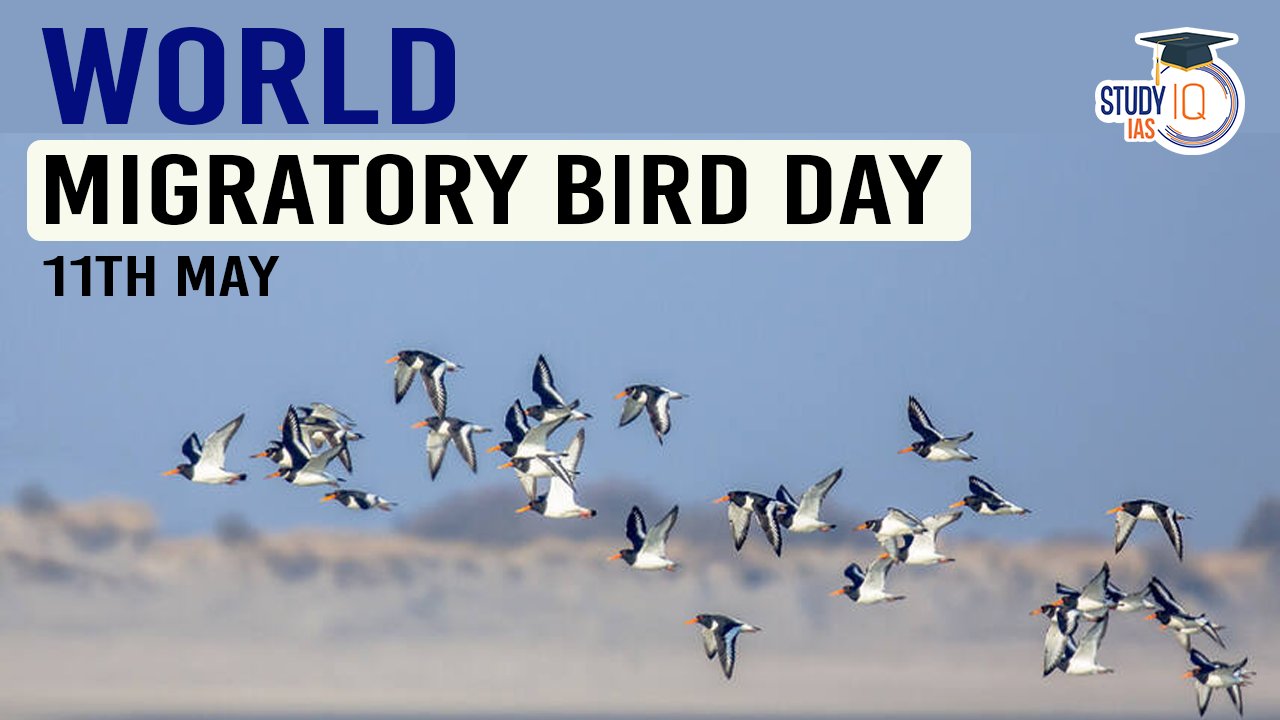Table of Contents
World Migratory Bird Day 2025, celebrated on May 10th and October 11th, is based on the theme “Shared Spaces: Creating Bird-Friendly Cities and Communities.” This international campaign, which is being initiated by the United Nations along with its allies, accentuates the importance of city planning for both humans and migratory birds. It seeks to bring awareness to the issues faced by migratory birds, particularly in urban areas.
World Migratory Bird Day 2025
World Migratory Bird Day 2025 is observed on May 10 and October 11 under the theme “Shared Spaces: Creating Bird-Friendly Cities and Communities.” This global initiative highlights the urgent need to make urban areas safer for migratory birds, which face threats like habitat loss and collisions with buildings. Organized by the United Nations and its partners, the day encourages sustainable urban planning and community involvement in bird conservation. Migratory birds play vital roles in ecosystems, including pollination and pest control. The event promotes international cooperation and public awareness to ensure these birds continue to thrive across their migratory routes.
History of World Migratory Bird Day
World Migratory Bird Day was launched in 2006 by two international environmental agreements under the United Nations Environment Programme (UNEP):
-
The Convention on the Conservation of Migratory Species of Wild Animals (CMS)
-
The African-Eurasian Migratory Waterbird Agreement (AEWA)
Initially, the day was celebrated on the second Saturday in May. However, since 2018, WMBD has been observed twice annually:
-
May (spring migration in the Northern Hemisphere)
-
October (autumn migration in the Southern Hemisphere)
This biannual celebration ensures that the message of conservation reaches people across all migratory flyways and seasons.
World Migratory Bird Day 2025 Theme
The theme for World Migratory Bird Day 2025 is “Shared Spaces: Creating Bird-Friendly Cities and Communities.” This theme underscores the importance of designing and managing urban environments that support both birds and people. As urban areas expand, migratory birds face increasing challenges such as habitat loss, collisions with buildings, and light pollution. The 2025 campaign calls for collective efforts to create and protect green spaces, reduce hazards, and promote coexistence with migratory birds in urban settings.
World Migratory Bird Day is observed twice a year, on May 10 and October 11, aligning with the migratory patterns in the Northern and Southern Hemispheres. The day serves as a global platform to raise awareness about the conservation of migratory birds and their habitats.
Significance of World Migratory Bird Day
Migratory birds are ecological indicators that reflect the health of our ecosystems. They travel thousands of kilometers across continents, connecting people, places, and ecosystems. Yet, they face numerous threats:
-
Habitat loss
-
Climate change
-
Illegal hunting
-
Pollution and pesticides
-
Collisions with man-made structures
World Migratory Bird Day is significant because it:
1. Raises Global Awareness
The day educates the public on the importance of migratory birds and the complex challenges they face during their seasonal journeys.
2. Promotes Conservation Action
It encourages governments, NGOs, and individuals to take real steps—like habitat restoration and reducing urban risks—to help migratory birds survive.
3. Fosters International Cooperation
Since birds cross national boundaries, WMBD reminds us of the shared global responsibility to conserve migratory species through collaboration across borders.
How to Celebrate WMBD 2025
You can participate in World Migratory Bird Day 2025 through:
-
Birdwatching events and guided nature walks
-
Educational webinars and school programs
-
Art, photography, and essay competitions
-
Community clean-ups in wetlands and bird habitats
-
Advocacy campaigns for light pollution reduction and urban green spaces
Interdependence Between Birds and Insects
- Insects as Vital Energy Sources: Insects provide essential energy for migratory bird species. They are rich in nutrients, offering protein-dense, high-energy food. During migration and other life stages (such as feeding their offspring), birds heavily rely on insects.
- Influence on Migration Timing: The presence of insects significantly affects the timing, duration, and overall success of bird migrations. Birds actively forage for insects during stopovers along their migration routes.
- Species-Specific Reliance: Different bird species exhibit varying degrees of reliance on insects. For instance:
- Warblers, Flycatchers, Swallows, and Swifts: These species depend heavily on insects.
- Ducks, Shorebirds, and Some Raptors: They also rely on insects during migration and while raising their young.
| Convention on the Conservation of Migratory Species of Wild Animals (CMS) |
About CMS
Appendix I: Migratory species threatened with extinction
Appendix II: Migratory species that need or would significantly benefit from international co-operation
Framework Convention Approach
|


 SSC MTS Salary 2025, Check Highest Salar...
SSC MTS Salary 2025, Check Highest Salar...
 F-35 Fighter Jet Stranded in Kerala: Dis...
F-35 Fighter Jet Stranded in Kerala: Dis...
 List of Awards and Honours Received by N...
List of Awards and Honours Received by N...





















